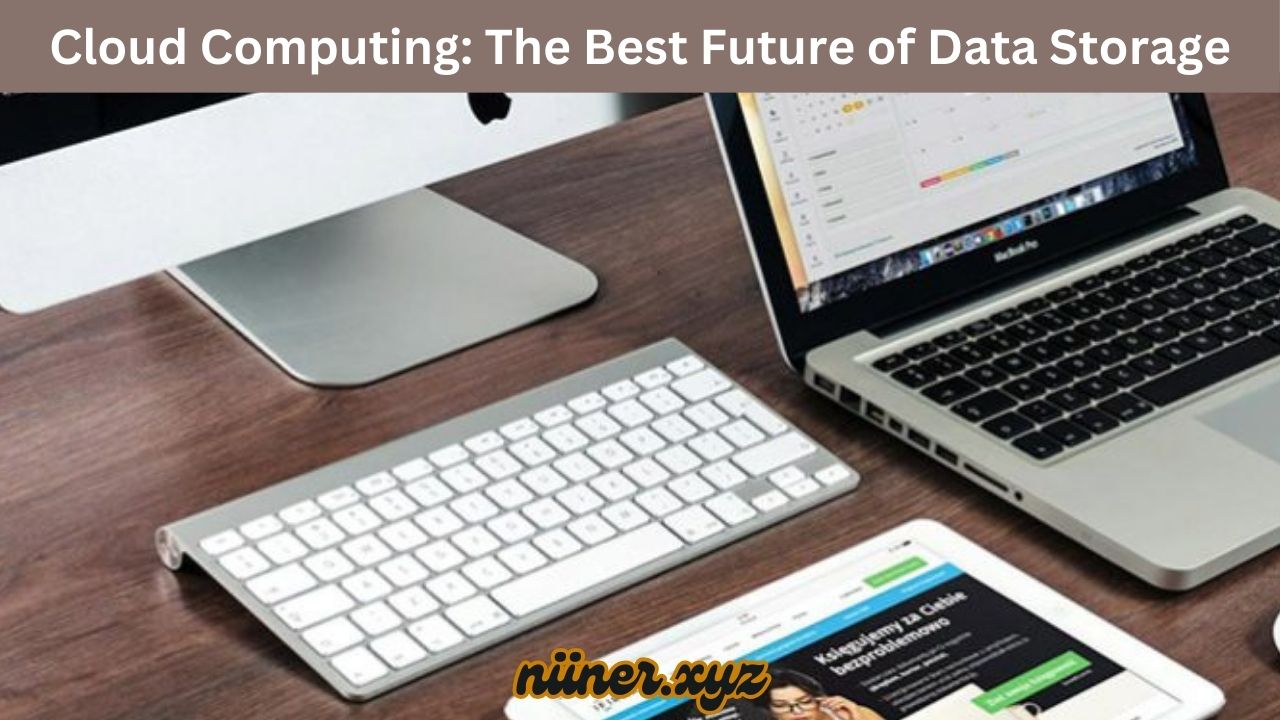Cloud Computing
All your files, documents, and photos stored securely in one place, accessible anytime, anywhere. No more worrying about bulky hard drives or lost USB sticks. Sounds like a dream, right? That’s exactly what cloud computing offers. It’s revolutionizing how we store, manage, and access data, and it’s here to stay.
Let’s dive deep into the world of cloud computing, understand how it works, and why it’s shaping the future of data storage.
Table of Contents
1. What is Cloud Computing?

Cloud computing allows you to store and manage data over the internet instead of relying on physical storage devices. Think of it as a virtual storage locker. Whether it’s your photos, business documents, or app data, it’s all stored on remote servers managed by cloud service providers.
These providers take care of maintaining, upgrading, and securing the servers while you enjoy uninterrupted access to your data. All you need is an internet connection, and voilà—you’re ready to go.
2. How Cloud Computing Works

At its core, cloud computing involves three main components:
- Front-end: The user interface where you access cloud services (e.g., through a web browser or app).
- Back-end: The infrastructure and systems that handle data storage and management.
- Internet Connection: The bridge that connects you to the cloud.
When you upload a file, it gets stored in a remote data center. These data centers are equipped with robust servers, ensuring your data is always accessible, secure, and backed up.
3. Efficiency: Doing More with Less

One of the greatest perks of cloud computing is its efficiency. You no longer need to buy expensive hard drives or maintain bulky servers. Instead, you can store unlimited data on the cloud, saving space, time, and money.
Companies love this feature because it eliminates the need for on-site data centers, which are costly to build and maintain. It’s a win-win for businesses and individuals alike.
4. Scalability: Grow at Your Own Pace
Whether you’re a small startup or a global enterprise, cloud computing can scale up or down depending on your needs.
- Need more storage? Upgrade your plan instantly.
- Need less storage? Downgrade without losing any data.
This flexibility is a game-changer for businesses in dynamic industries. You only pay for what you use, making it a budget-friendly option.
5. Flexibility: Your Data Anytime, Anywhere
Gone are the days of rushing back to your office to retrieve a forgotten file. With cloud computing, you can access your data from any device—your phone, tablet, laptop, or even a smart TV.
Imagine editing a presentation on your phone during your morning commute or sharing vacation photos with family halfway across the world. That’s the beauty of cloud flexibility.
6. Safety First: Keeping Your Data Secure
Worried about data breaches or losing important files? Cloud computing has your back with top-notch security measures.
- Encryption ensures your data is unreadable to unauthorized users.
- Firewalls block malicious attacks.
- Regular backups guarantee you never lose valuable information.
Professional cloud providers also offer multi-factor authentication, adding an extra layer of protection to your account.
7. Cost Savings: Save Money, Save Stress
Why spend a fortune on hardware and software when you can use cloud services at a fraction of the cost?
- No need to buy servers or external drives.
- No maintenance fees for physical infrastructure.
- Pay only for what you use.
For businesses, this means redirecting funds towards growth and innovation instead of IT expenses.
8. Collaboration Made Simple
Cloud computing makes teamwork a breeze. With shared access to files, teams can work together in real-time, even if they’re on opposite sides of the globe.
- Edit documents simultaneously.
- Track changes with version control.
- Share updates instantly.
Platforms like Google Workspace and Microsoft 365 take collaboration to a whole new level, helping businesses stay productive and connected.
9. Automatic Updates: Set It and Forget It
Forget about manually updating software or worrying about outdated security patches. Cloud providers handle all updates for you, ensuring you’re always running the latest version.
This hands-off approach saves time and keeps your systems running smoothly without interruptions.
10. Environmentally Friendly: Saving More Than Just Data
Cloud computing is a greener alternative to traditional storage methods. By reducing reliance on physical servers, it helps cut energy consumption and greenhouse gas emissions.
So, by switching to the cloud, you’re not just saving money—you’re contributing to a healthier planet.
11. Reliability: Trust the Cloud
Cloud providers invest heavily in redundancy systems, meaning your data is stored in multiple locations. In case of a system failure or natural disaster, your data remains safe and accessible.
This reliability gives businesses and individuals peace of mind, knowing their valuable information is in good hands.
12. Driving Innovation
Cloud computing fuels innovation by giving businesses access to cutting-edge technologies like:
- Artificial Intelligence (AI) for smarter decision-making.
- Big Data Analytics to uncover trends and insights.
- Internet of Things (IoT) to connect devices seamlessly.
It’s a springboard for creativity, helping organizations stay competitive in today’s fast-paced world.
13. Challenges of Cloud Computing
Of course, no technology is perfect. Here are a few challenges to consider:
- Internet Dependency: Without a stable connection, accessing the cloud can be tricky.
- Data Privacy Concerns: Choose reputable providers with strong privacy policies.
- Cost Management: Monitor usage to avoid overspending.
14. The Future of Cloud Computing
The future looks bright for cloud computing. Innovations like edge computing, hybrid cloud models, and enhanced security features are already on the horizon.
As businesses and individuals continue to embrace the cloud, we’re only scratching the surface of its potential.
15. Conclusion
Cloud computing is more than just a buzzword—it’s a transformative technology changing the way we store, access, and manage data. With benefits like efficiency, scalability, security, and cost savings, it’s no wonder businesses and individuals are making the switch.
Ready to embrace the future? Start your cloud journey today and unlock a world of possibilities.
7 Best Reasons Why Your Website Needs an SSL certificate
FAQs
1. What is cloud computing in simple terms?
It’s a way to store and access data online instead of using physical devices like hard drives.
2. Is cloud storage safe?
Yes, cloud providers use advanced security measures like encryption and firewalls to protect your data.
3. How does cloud computing save money?
You don’t need to invest in expensive hardware or maintenance. You pay only for what you use.
4. Can I use cloud storage without an internet connection?
No, you need an internet connection to access cloud storage.
5. What’s the best cloud service provider?
Top providers include Google Drive, Microsoft Azure, Amazon Web Services (AWS), and Dropbox.

